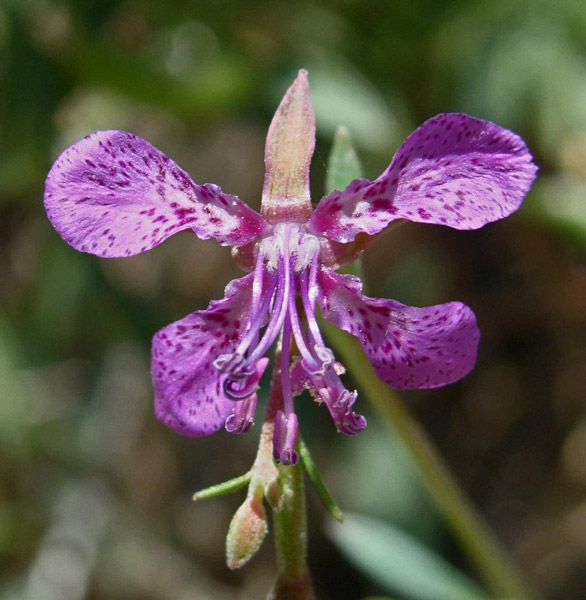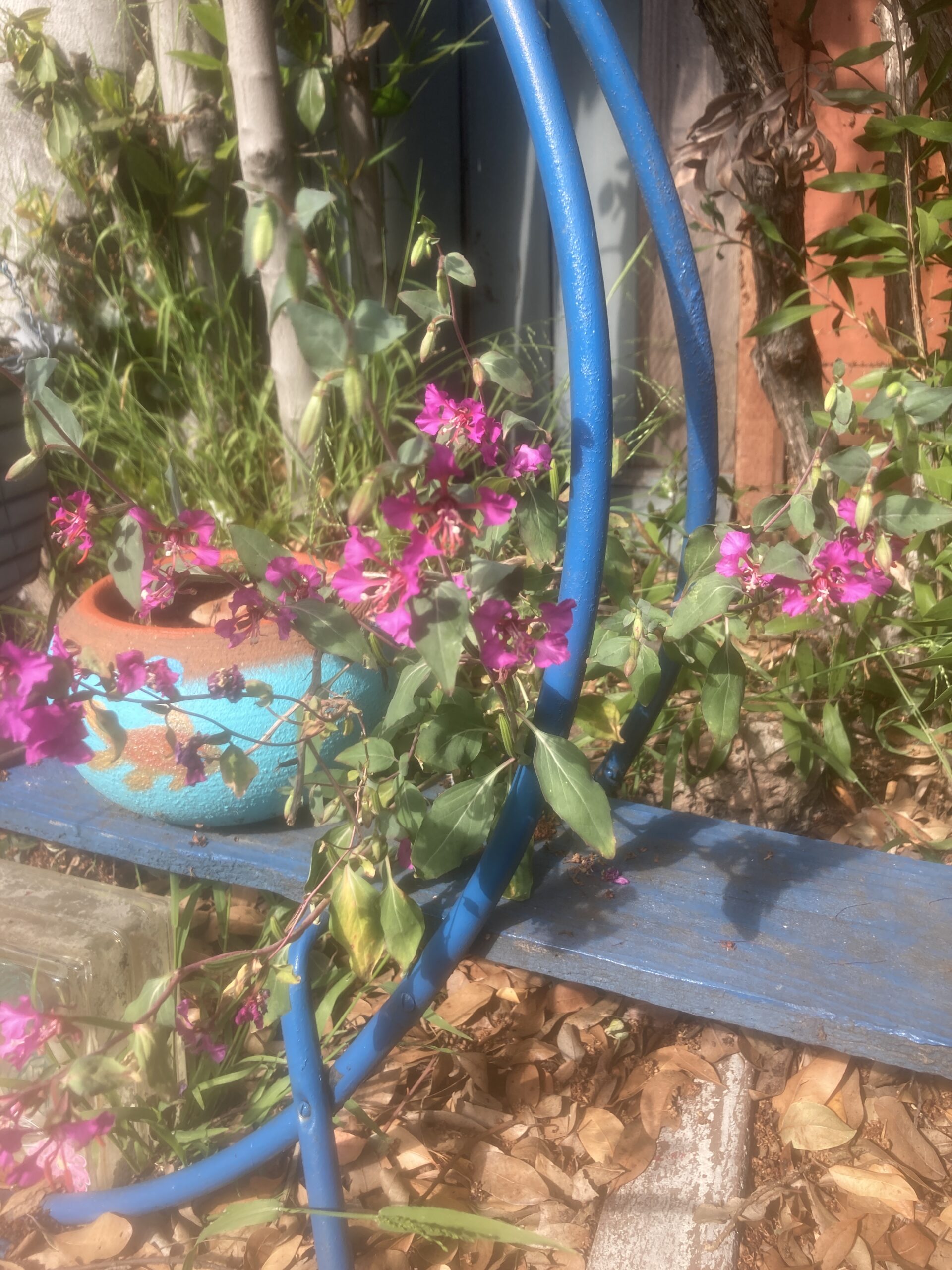Overview
Clarkia flowers are non toxic to both cats and dogs. They are easy to grow in both containers and in the ground as part of a pet safe garden. Clarkia is native to California and thrives in a California native gardens. We have them throughout Lovie’s Pet Safe Garden in the San Francisco Bay Area and can testify as to how beginner friendly they are. They do tend to fall over if the pot is not deep enough, but they are light and easy to prop/ brace, if it bothers you.
So you know, we check the flowers we feature on our site with the ASPCA and do extensive internet research for both the common and scientific name just to be super pet safe. If we cannot find direct reference, we check up to genus and so on until we can confirm whether a plant is toxic or non toxic to both cats and dogs. If we are not sure, or get contradictory information, we do not include it. Many of the plants featured we have grown successfully in our own pet safe garden in Northern California. You can see many of garden stars in photos from Lovie’s Pet Safe Garden.

Physical Attributes
Clarkia flowers are cup-shaped with four petals that are often pink, red, purple, or white in color. They typically grow 1-3 feet tall with hairy stems and lance-shaped leaves.
General Care Tips and Pointers
Clarkia flowers prefer full sun and well-drained soil. They are drought-tolerant once established. Deadhead spent blooms to encourage more flowering. Clarkia is an annual that self-seeds readily.
Fun Facts/Trivia
Clarkia is named after William Clark of the Lewis and Clark expedition. The genus includes about 40 species that are native to western North America. Clarkia flowers close at night and on cloudy days.

More Considerations About Clarkia flowers:
| Aspect | Details |
|---|---|
| Container Friendly | Yes, can be easily grown in containers. Best in containers that are deep enough to prevent the plant from flopping over. Click here for more ideas of what thrives in a pet safe container garden. [1][4] |
| Indoor/Outdoor | Outdoor[5] |
| Sun/Shade | Full sun[4][5] |
| Perennial/Annual | Annual with a dramatic death but reseeds easily. [5] |
| Flowering | Cup-shaped pink, red, purple or white flowers that bloom in spring and summer.[5] |
| Drought Tolerant | Yes, once established. Grows well with plants that like good drainage. [3][5] |
| Pollinator Magnet | Yes, attracts bees, butterflies and other pollinators.[3][4] |
| Beginner Friendly | Yes, easy to grow from seed.[3][5] |
| Good Ground Cover | No, grows 1-3 feet tall and somewhat delicate for foot traffic.[5] |
| Good Privacy Screen | No, only grows 1-3 feet tall and is very think. |
| Invasive/Spreader | Self-seeds readily but not considered invasive since it does not spread.[5] |
| Dog & Cat Durable | Could handle some brushing against and since it’s non toxic to both cats and dogs, it could survive infrequent chewing. |
| Rodent Repellent | neither attracts nor deters common pets like rats or squirrels (like CA ground or tree squirrels) |
| Deer Resistant | yes |
| Native | Yes, native to western North America including California and can be seeing growing wild in the state. Check out some other pet safe California native flowers. [2][5] |
Citations:
[1] https://www.ufseeds.com/flowers/container-flowers
[2] https://www.gardenia.net/guide/best-annual-flowers-plants-for-shade
[3] https://www.homegroundhabitats.org/blog/some-california-native-wildflowers-grow-seed/
[4] https://www.rhs.org.uk/education-learning/gardening-children-schools/family-activities/grow-it/grow/clarkia
[5] https://plantlust.com/plants/11798/clarkia-purpurea-ssp-quadrivulnera/





